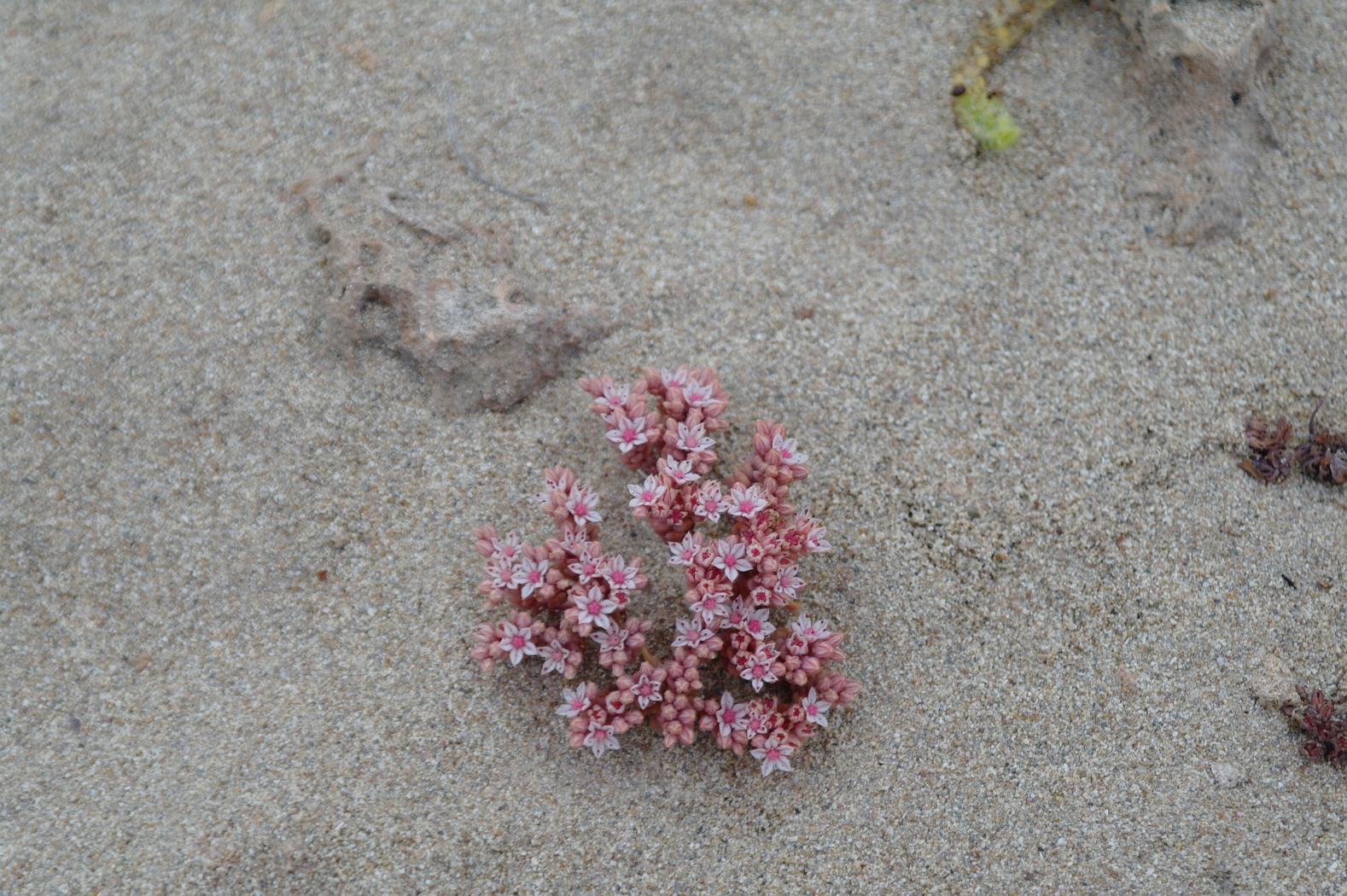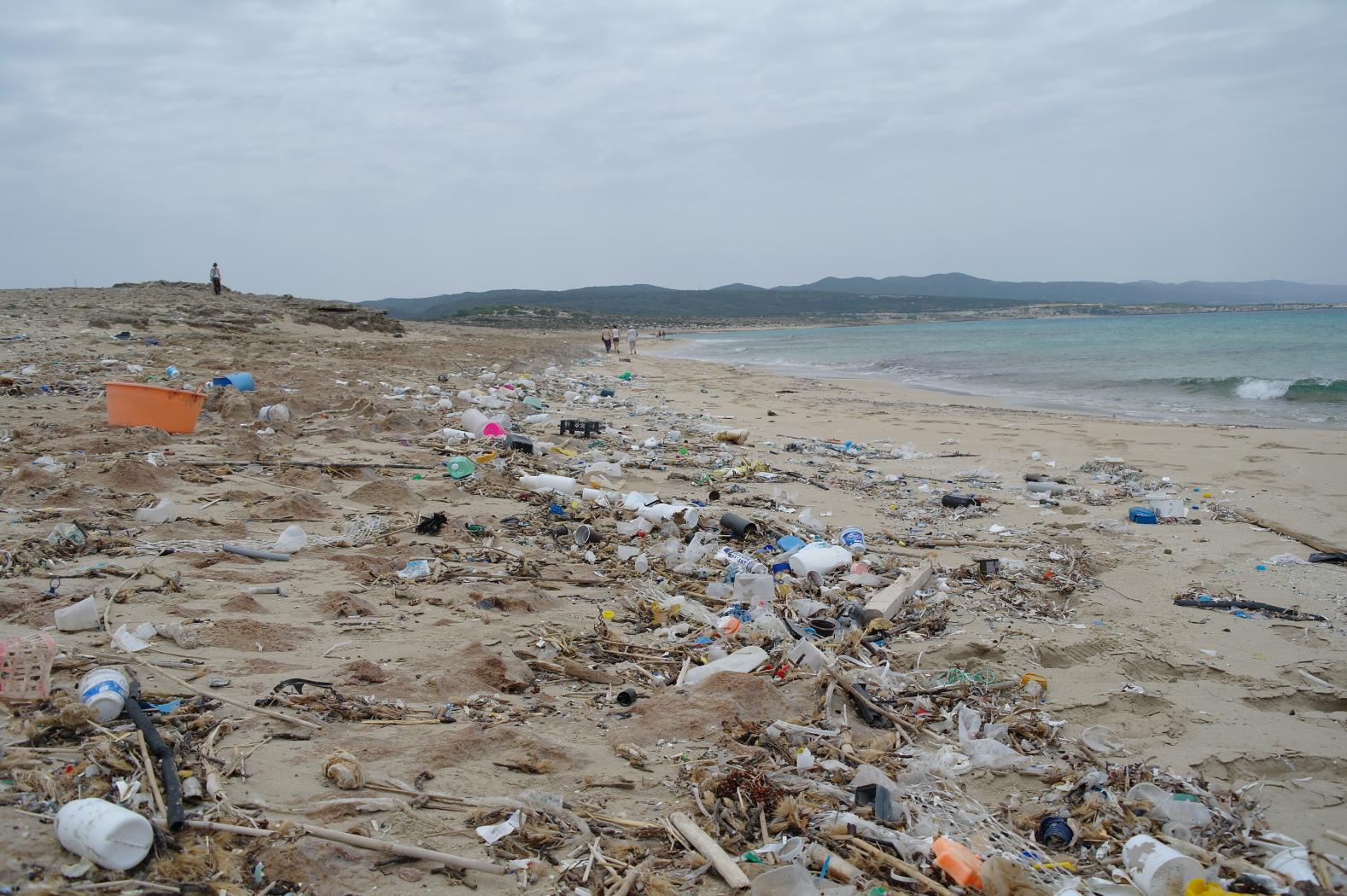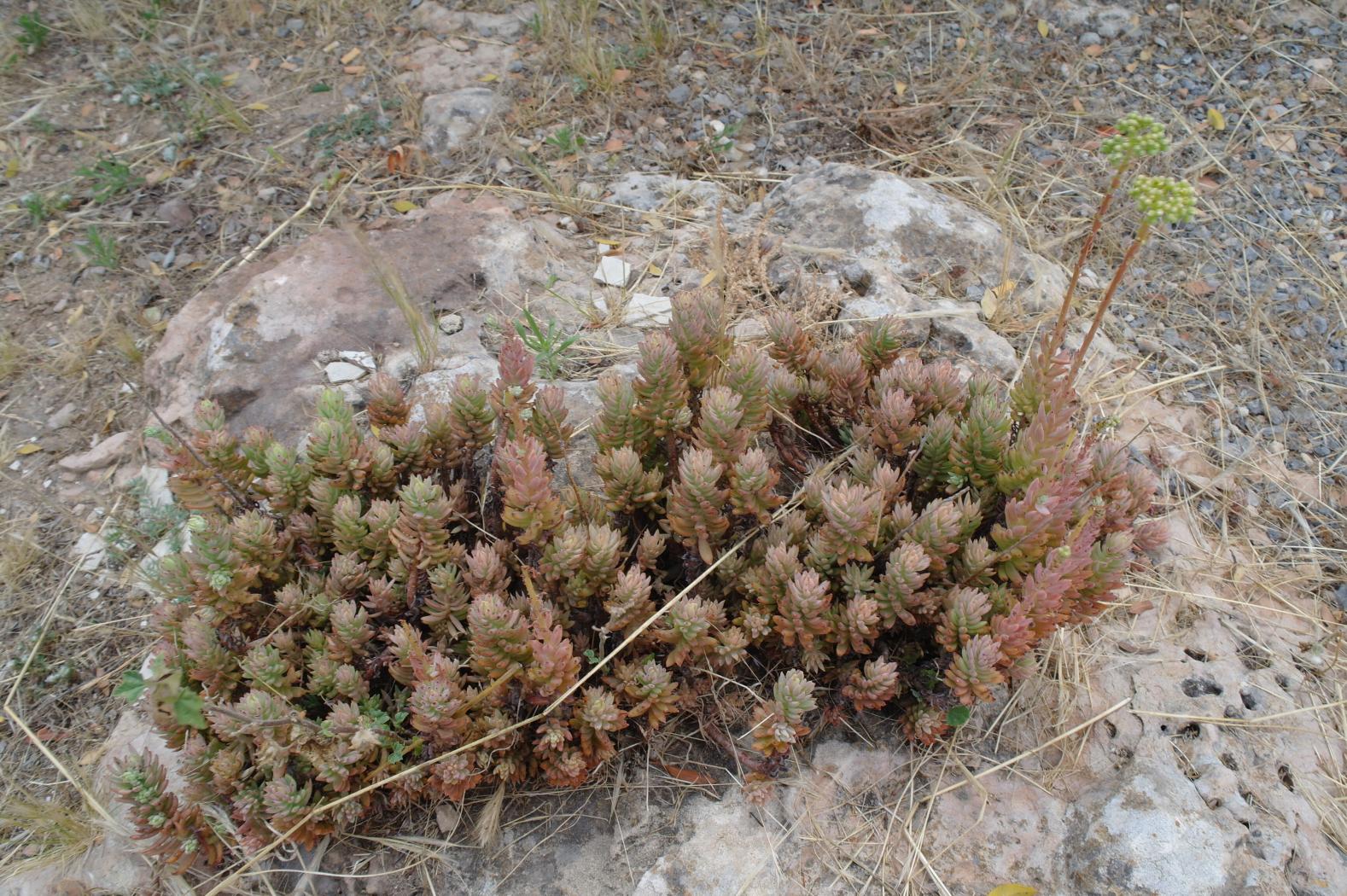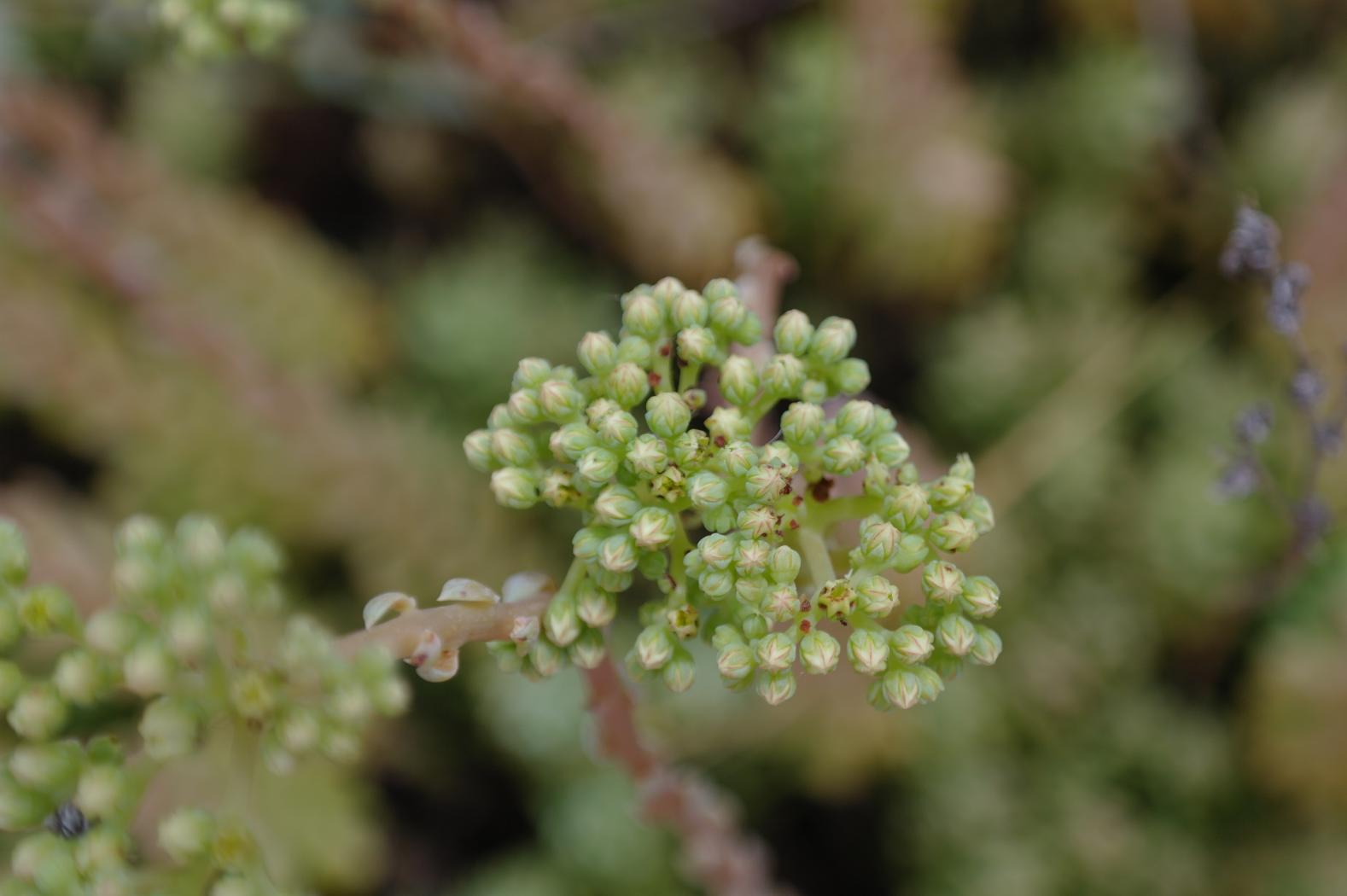You are not logged in.
- Topics: Active | Unanswered
Pages: 1
#1 2015-06-23 21:24:29
- Kalanchoesammler
- Member
- Registered: 2014-11-30
- Posts: 20
Sedum spec.
Werte Forengemeinde,
um welches Sedum könnte es sich hier handeln? Sedum rubens?
Gefunden habe ich es an der Nord-Küste der Karpaz-Halbinsel in der Türkischen Republik Nordzypern.

Leider war auch dieses Bild Teil der Realität.

Grüße,
Paul
Last edited by Kalanchoesammler (2015-06-23 21:28:48)
Offline
#2 2015-06-24 12:47:30
- tephro49
- Member

- From: Saumur - Maine et Loire
- Registered: 2011-01-17
- Posts: 156
Re: Sedum spec.
Hello Paul,
Beautiful little plant ![]()
I think it could be Sedum pallidum ssp. bitynicum, but without certainty.
ma galerie : http://www.flickr.com/photos/tephro49/c … 563270370/
Offline
#3 2015-06-24 20:08:02
- margrit
- Administrator
- Registered: 2007-09-03
- Posts: 5,388
Re: Sedum spec.
As far as I see, S. pallidum is not indicated for Cyprus. It is rather S. eriocarpum. It could be ssp. porphyreum which is growing on Cyprus, decisive is the number of stamens - difficult to see on the photo. Paul, do you have a close-up which would help to count the stamens ?
Und - der Strand - das ist eine Schande, die reinste Abfalldeponie. Offenbar stört das niemanden.
Offline
#4 2015-06-24 20:49:15
- Kalanchoesammler
- Member
- Registered: 2014-11-30
- Posts: 20
Re: Sedum spec.
Vielen lieben Dank für die Antworten. Die Pflanze hat 5 Stamina, habe gerade mal reingezoomt. Spricht das also für ssp. porphyreum? Wenn ja, wäre das auch eine endemische Pflanze!
Die Vermüllung der Strände ist auf die Vermüllung der Meere zurück zu führen, weniger ist es die Verschmutzung der Strände durch die Inselbewohner. Es wird wohl einmal im Jahr alles durch Freiwillige abgesammelt, aber das Problem ist damit natürlich nicht aus der Welt. An diesem Strand kommen im übrigen jedes Jahr selten gewordene Meereschildkröten (Caretta caretta, Chelonia mydas) zum Ablegen der Eier an. Und wenn man sich vorstellt, dass diese wunderbaren Geschöpfe durch so einen Plastikhaufen robben müssen, um ihre Gelege bauen zu können, ist das einfach nur eine Schande!
Und noch etwas: was könnte das sein? Sedum sediforme? Habe es erst für eine Zierpflanze gehalten, aber könnte ja im Falle von S. sediforme auch ein wildwüchsiges Exemplar gewesen sein (wuchs hinter dem Tourismusbüro). Sorry für die schlechte Qualität der Bilder.


Liebe Grüße,
Paul
Offline
#5 2015-06-25 19:48:22
- tephro49
- Member

- From: Saumur - Maine et Loire
- Registered: 2011-01-17
- Posts: 156
Re: Sedum spec.
As far as I see, S. pallidum is not indicated for Cyprus.
It's true, I had understood that "Türkischen Republik Nordzypern" can be translated into "north of Turkey ... sorry ![]()
Paul, for the last plant I'm agree for Petrosedum sediforme.
ma galerie : http://www.flickr.com/photos/tephro49/c … 563270370/
Offline
#6 2015-06-25 20:06:09
- margrit
- Administrator
- Registered: 2007-09-03
- Posts: 5,388
Re: Sedum spec.
Nein, Paul, wenn sie nur 5 Staubfäden hat, dann kann es nicht ssp. porphyreum sein.
No, if there are only 5 stamens, it cannot be ssp. porphyreum.
However, Ray says : "S. prophyreum has a habit of shedding some of its two whorls of stamens, but newly opened flowers have their full complement of ten stamens." So there might still be a chance !
S. porphyreum is often confused with S. caespitosum and S. rubens, Ray explains : "S. caespitosum and S. rubens are kyphocarpic species, that is, the carpels bulge, bend outward and produce stellate fruit. The fruit of S. porphyreum remain upright."
Unfortunately no fruits are visible on the photo .... There are still many buds - when did you take the photo Paul?
Offline
#7 2015-06-27 07:52:13
- Kalanchoesammler
- Member
- Registered: 2014-11-30
- Posts: 20
Re: Sedum spec.
Thanks both of you for your replies! From which book do you quote Margrit? The Photo was taken on the 28 th of May.
Offline
#8 2015-06-27 19:54:02
- margrit
- Administrator
- Registered: 2007-09-03
- Posts: 5,388
Re: Sedum spec.
I do not quote from a book but from articles published by Ray in the Sedum Society Newsletters over the years. And I asked when the photo was taken because Ray also wrote : "Like many Mediterranean annuals, this little ephemeral stonecrop is a winter grower ending its cycle in spring, when it flowers itself to death. ... All three species grow in Cyprus, turn dark wine in full sun, and are spent by midsummer. Sedum porphyreum is the odd man out, for it is the only endemic succulent not to be made up of rosettes. .... After much searching, we discovered the diminutive S. porphyreum at Karavopetra, north of Lara Bay, Akamas Peninsula. Individual plants grow no more than a few centimeters high in sites where there is no competition from taller or more sprawling plants. .... associated with low-lying ground, although it is reported to grow on the lower slopes of the Kyrenia Mountains in the Turkish-occupied sector of the island."
I am quite confident that Ray will be able to identify it.
Offline
#9 2015-07-03 17:26:24
- margrit
- Administrator
- Registered: 2007-09-03
- Posts: 5,388
Re: Sedum spec.
Ray is convinced that it is S. eriocarpum ssp. porphyreum, he could spot at least 3 flowers with 10 stamens.
Offline
#10 2015-07-04 07:49:07
- Kalanchoesammler
- Member
- Registered: 2014-11-30
- Posts: 20
Re: Sedum spec.
Super, vielen Dank für deine Bemühungen! ![]()
Offline
Pages: 1